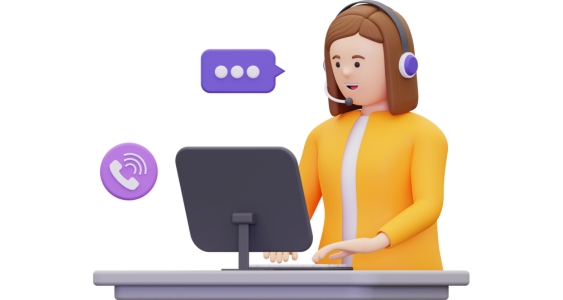Cloud call center solutions are the most popular software solutions for contact center setup by far, yet many potential buyers of contact center software still have a few prejudices about these tools. First of all, cloud software is conditionally new compared to on-premise solutions, which means not everyone is ready to believe in its reliability and security, even though it is reliable and secure.
Thus, we decided to make a short guide on this topic to tackle any myths or manipulations regarding the cloud call center solution, so we will tell you what is it, how it works and how to choose a reliable and capable cloud contact center software.
What Is a Cloud Call Center Solution?
Cloud call center solution is a call center software tool that uses cloud computing as its core technology for setting up and maintaining its infrastructure. In other words, a cloud call center solution is a type of SaaS (Software as a Service) software that is built and set up without using any physical infrastructure as it is in the case of traditional on-premises call center software.
Cloud computing allows developers to build the infrastructure of their solutions in the cloud, the digital environment that doesn’t require physical servers to be run on the capacities of their customers. It is extremely essential for small and medium-sized businesses (SMBs). because such an infrastructure location model is the best way to save costs on setup and maintenance, as it is the responsibility of a vendor.

Thus, the setup of cloud call center software is easy – you provide the vendor with technical specifications by your business requirements, the vendor takes his time – in most cases, it won’t take more than 48 hours, and here you go – you just have to download the software tool and login using the login details provided by the vendor.
How Does Cloud Call Center Solution Work?
Cloud call center software works not only using cloud computing – it is the technology that is used to build the call center environment and internal infrastructure, but the main purpose of call center is to handle calls – both inbound and outbound. Thus, there is another vital technology without which operating a call center is impossible.
This technology is called IP telephony, or VoIP (Voice Over Internet Protocol) telephony. These two terms can be used interchangeably, and they are used so, but there is one vital difference between them – IP telephony is about transferring only voice data, which means calls and VoIP technology is used to transmit other types of data – media, video, images, etc.
Some call center software providers don’t provide you with VoIP services – this means you can’t handle calls, which makes your call center non-functional. Nonetheless, in this case you have to find a third-party provider for your call center who will furnish you with VoIP services, and this will cost you extra.
On the other hand, there are plenty of options on the market that have VoIP services included, which means no extra charges for you. Another important aspect is the matter of virtual phone numbers, as you require them to service your customers in different locations – this is because you need local Caller IDs and toll-free numbers. These numbers can be included in your pricing plan, but their number is limited and this is another field where you will have to pay a bit, so add this in your budget plan.
Must-Have Features of Cloud Call Center Solution
When it comes to choosing cloud call center software, there are two main things to look at – pricing policy and features set. In the case of pricing, it will take a week to describe all options on the market, but keep in mind that many vendors do use hidden fees – for example, call hours limits, cloud storage limits, call recording limits, paid integrations, etc. Also, always check the specifications of each subscription plan – they often differ in many aspects than it is listed.
But let’s come back to features and define which of them are must-haves:
Automated call routing – it is a technology that routes calls to agents by using pre-set rules that allow you to cover your current needs – optimize agent occupancy, provide high-quality customer service or reduce wait times.

Call monitoring and recording – call monitoring is a feature that allows you to listen to live calls in different modes, where you can either advise the agent, monitor call incognito or take part in the conversation. Call recording is needed for quality control purposes.
Call scripting – call scripts are a must-have for both inbound and outbound calls as they allow agents to meet service standards and handle customer queries quickly and efficiently.
Call queuing – putting calls in a queue is important to avoid losing customer calls, as well as you require call management features to reduce call abandonment rate.
Multichannel communication – this is a must-have feature these days, as customers don’t want to be limited to only one option for communication: thus, you have to offer at least a few communication options, including self-service opportunities, such as IVR software or chatbots – or even both.
Analytics and reporting – analytics and reporting assist you in decision-making, which means you will be able to to spot and fix any performance issues or imperfections that can harm customer satisfaction and your business.
Conclusion
Cloud-based call center technology is the best call center solution to pick up in 2024, as it offers fast and cheap setup, wide range of services and features for your business and easy scalability in the future.
We don’t recommend to look for on-premises solutions, as they are outdated and lose market share from year to year, so let’s better focus on future than on the past.
See Also: Internet Security 101: Keeping Yourself Safe Online









